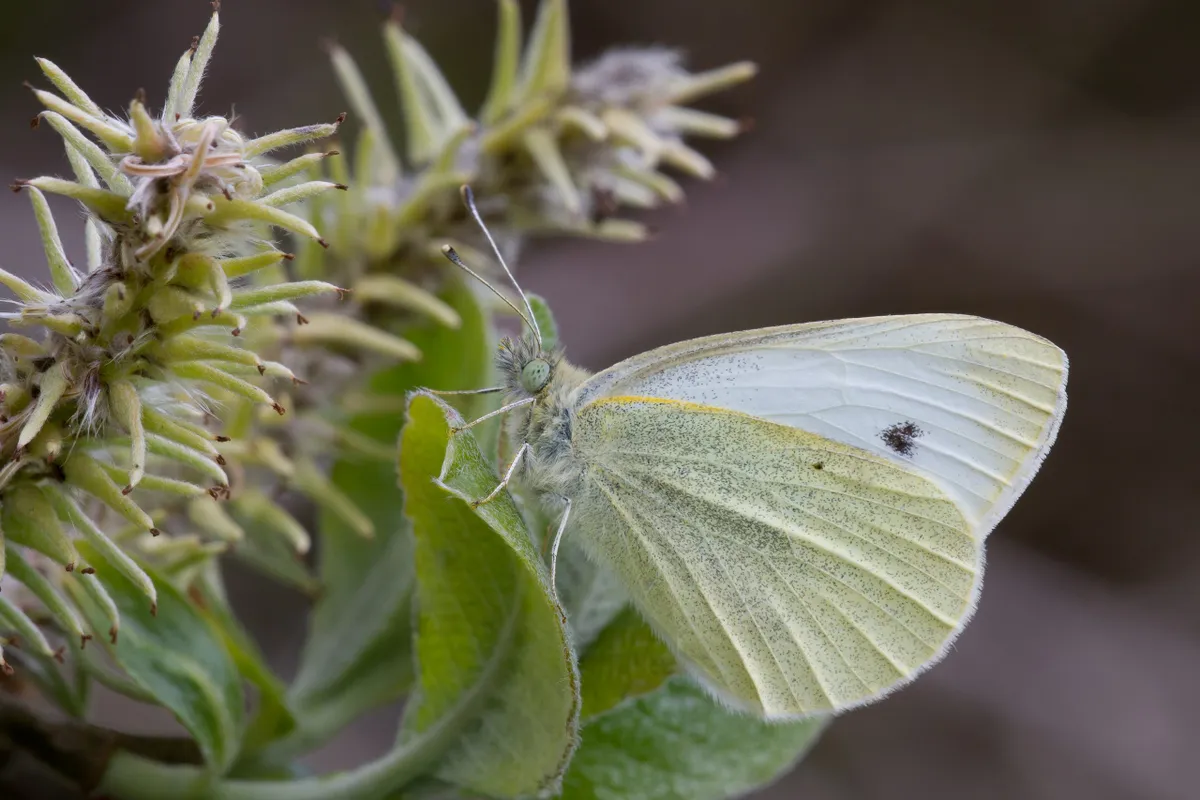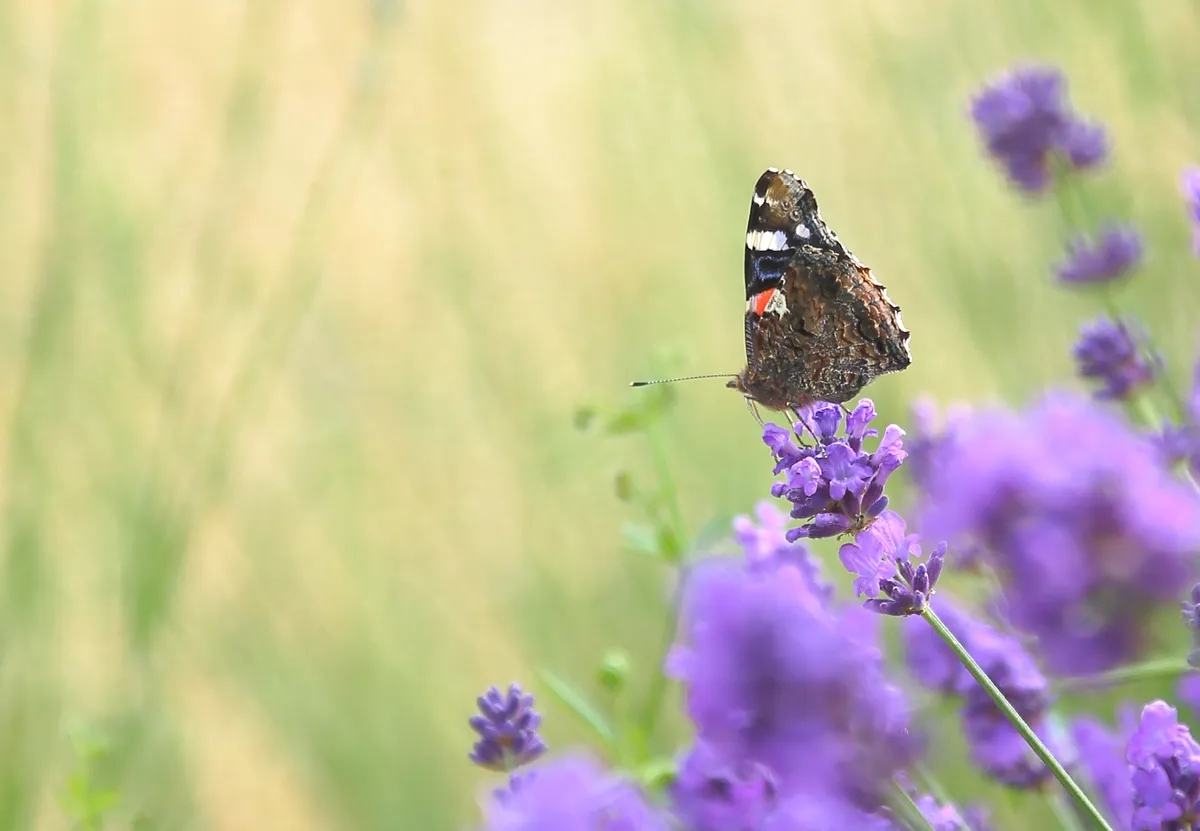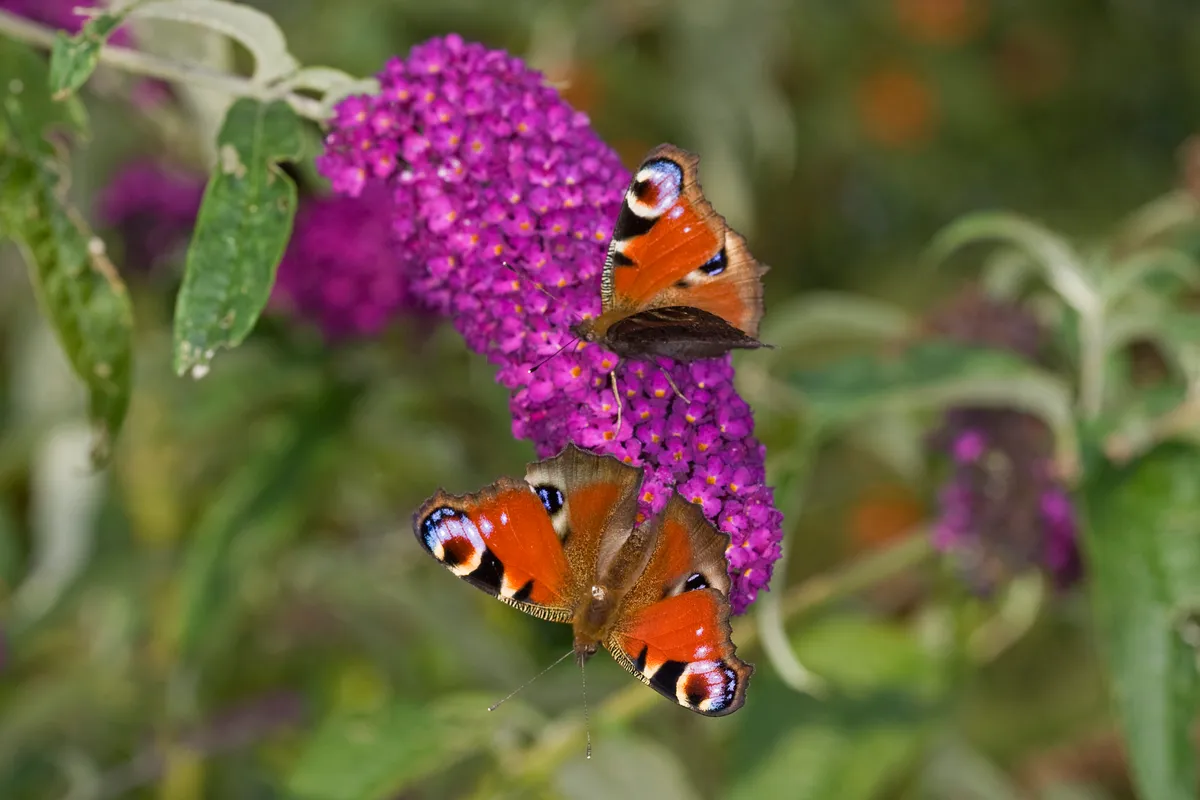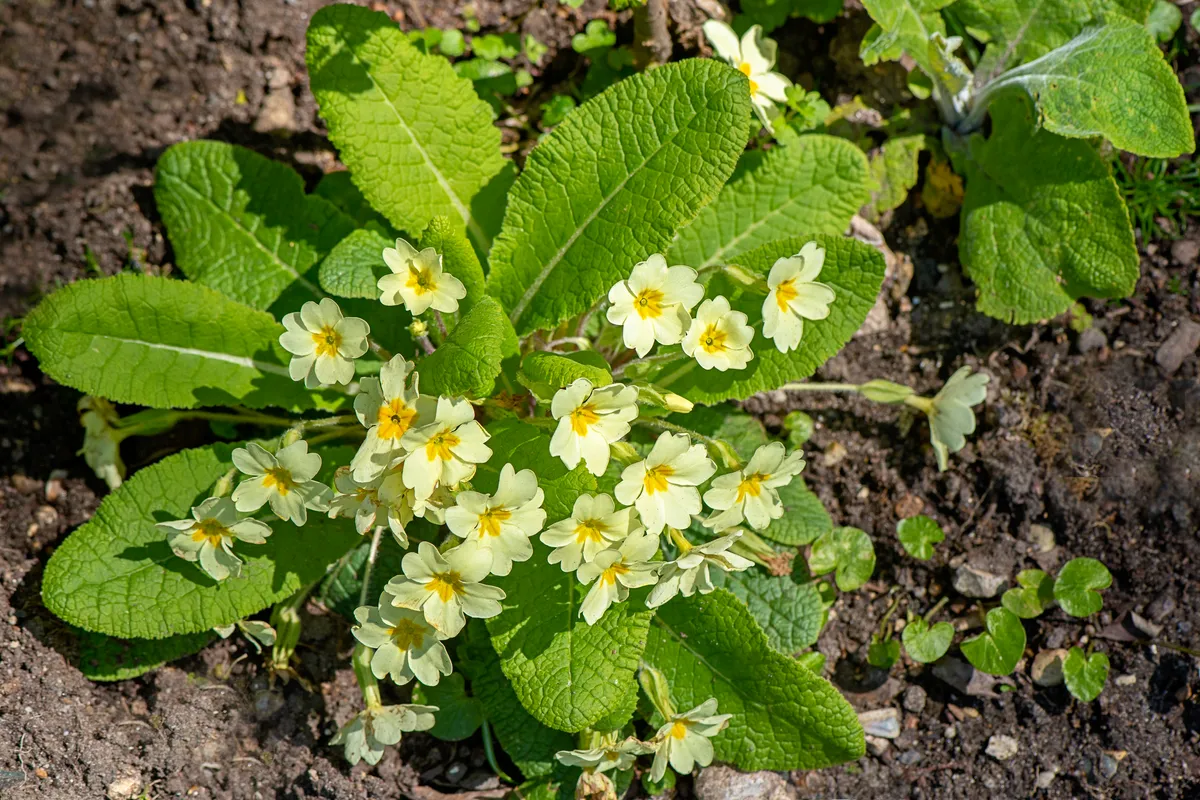Butterflies and flowers go together like jam and cream. Each is wonderful in its own right, but together they make something special. Watching butterflies flit around my mini meadow and tumble over the plants in my border makes my heart leap, and is one of the many rewards of gardening for wildlife. Seeing these pretty insects in our gardens is good for the soul – butterflies make us happy!
Are butterflies endangered in the UK?
Sadly, these often-colourful pollinators are in serious decline. Results from the 2021 UK Butterfly Monitoring Scheme (UKBMS), led by Butterfly Conservation, the UK Centre for Ecology & Hydrology, the British Trust for Ornithology and the Joint Nature Conservation Committee, show that in terms of abundance, 2021 was a below-average year for UK butterflies, including many of our common and widespread species. The green-veined white, for instance, had its fourth worst year on record and the large skipper its fifth. The large white and small skipper both had difficult years, and the ringlet its lowest numbers since 2012.
Shorter annual surveys are also offering worrying snapshots. In 2021, Butterfly Conservation’s Big Butterfly Count saw the overall number of butterflies recorded at its lowest level since the counts began in 2010, despite record numbers of people taking part (more than 150,000).
More related content:
- Butterflies of the UK
- How does a caterpillar turn into a butterfly?
- Attenborough says “watching butterflies is good for you”
- How to identify 12 common British caterpillars
Large white butterfly. © Peter Eeles/UK Butterflies
On average, participants clocked up just nine individual butterflies or moths per 15-minute count over the three-week survey, down from 11 in 2020. The peacock registered its lowest numbers since 2012; the small tortoiseshell had its third-worst summer since 2010.
“Some of the UK’s butterflies have more than one generation per year, meaning we would see adults in spring and summer. The majority of these double-brooded species experienced their worst year since the start of the Big Butterfly Count in 2010,” says senior surveys officer Zoë Randle. “Changes in the weather are likely to be the cause of this. March 2021 was warmer than average, which would have stimulated butterfly activity. May 2021 was very wet, however, which will have hampered feeding and breeding. These combined weather effects are likely to have reduced the spring generation, which has knock-on effects for the summer generation.”

Is there any good news for butterflies?
Thankfully, there’s good news emerging among the bad. The UKBMS data also shows that some threatened species actually coped well in 2021. The brown hairstreak and silver-studded blue both had their best years since 1996, for instance, while the heath fritillary has increased by 112 per cent at monitored sites in the past decade. The Glanville fritillary, dingy skipper and chalk hill blue also had good years.
More related content:
- Best flowering plants for butterflies throughout the year
- Big Butterfly Count: how to take part and species to spot
- Large blue butterfly returns to Gloucestershire site after 150 years
A male orange-tip butterfly. © Steve Round
“When the general picture is of long-term decline, we’re delighted to see positive signs for some species,” says Richard Fox, Butterfly Conservation’s associate director of recording and monitoring. “These successes demonstrate what can be achieved through conservation efforts, and reinforces the importance of managing habitat to support butterflies. It is important, though, to remember that this data relates to abundance, not distribution. It’s good news, but it’s only one side of the story.”
Why are butterflies in decline?
We know only some of the reasons why butterfly numbers are in decline. In the wider countryside, it’s thought that numbers are plummeting due to habitats being lost to the intensification of agriculture, changes in woodland management and so-called ‘urban creep’, where towns and cities expand into green spaces. But the problems don’t end there. Back gardens are increasingly seen as ‘outdoor rooms’, with paving and decking replacing vegetation, and artificial lawns favoured over grass, while front gardens are surrendered to car parking. None of this is good for butterflies, which rely on plants and flowers – some of which need to be left intact for several months – to complete their life-cycles successfully.
Pesticide use is also a big problem, as is nitrogen run-off from agricultural fertilisers. This changes the chemical make-up of plants, causing them to grow bigger and, as a result, alters the microclimate that they provide to butterflies, by creating more shade, for instance. “More research is needed here,” says Fox, “but something’s going on.”
And all that is before we’ve even spoken about the increasing amounts of carbon dioxide in the atmosphere. “That’s another thing,” says Fox. “CO2 makes plants grow bigger, so again, research is needed to see if this could have an effect on microclimates and butterfly numbers.”
While CO2 may pose a threat to some butterflies, climate change is, conversely, offering opportunities for others. As temperatures rise, species such as the peacock, comma and speckled wood, previously found mainly in southern Britain, are spreading into northern England and Scotland. Yet concerns remain that extreme weather events – droughts, floods and storms – will put further pressure on populations and their delicate life-cycles, many of which rely on the perfect combination of British weather: sunshine and showers.

So what can we do to help our butterflies and moths?
Well, plenty! We have 22 million gardens in the UK and many more balconies, roof gardens, allotments and windowsills besides. By clothing these spaces with the right plants, we can give them a fighting chance. Spring is the ideal time to start planting and the more plants we can grow for butterflies, the better their odds this year and into the future.
The first thing to do is provide a source of nectar. Most species rely on this sugary fluid to give them the energy they need to fly and find a mate. By having flowers in bloom consistently from March to November, you can provide a nectar bar for most of the year. It might be primroses, bluebells and forget-me-nots in spring; alliums, lavender and scabious in summer; then late-flowering Verbena bonariensis, sedums and rudbeckias in autumn.

It’s also important to remember that some species, such as the speckled wood, drink honeydew, a sweet substance secreted by aphids. So simply by being kinder to aphids and not eradicating them from your garden, you can help butterflies to survive.
As well as providing nectar, it’s also vital to consider butterfly caterpillars. To reproduce, butterflies lay eggs and will only do so on specific foodplants. By nurturing more of these in our gardens and allotments, we can offer breeding opportunities that otherwise wouldn’t exist. Choose cuckooflower and garlic mustard for caterpillars of the orange-tip butterfly, hops for the comma, and holly and ivy for the holly blue. A large patch of nettles in sunshine is what’s needed for caterpillars of the peacock, red admiral and small tortoiseshell, while long grassy areas provide breeding opportunities for the speckled wood, gatekeeper, ringlet and meadow brown (see foodplant guide, p64).
Don’t forget that caterpillars support other wildlife, such as birds, hedgehogs and toads, adding to the overall wildlife value of your garden.

Butterflies also need places to shelter and hibernate. Five UK species (brimstone, comma, peacock, small tortoiseshell and red admiral) overwinter as adults, and retreat among log piles and vegetation for the winter, while the orange-tip overwinters as a chrysalis, usually on the old stems of its caterpillar foodplant. The speckled wood may overwinter as a caterpillar or chrysalis, usually in thickets of grass or beneath leaf litter. This makes them vulnerable to tidy gardeners, who may cut back ivy, trim long grass or clear away ‘spent plants’, not realising that they’re still being used by wildlife. Leave plants intact over winter and clear them in spring instead, but always check for chrysalises just in case.
Butterfly-friendly gardens and outdoor spaces not only provide breeding and feeding opportunities, but they look nicer too. Who doesn’t love a garden packed with colourful, scented blooms such as lavender and viper’s bugloss? Who wants to look at a bare fence when you can swathe it with ivy or hops and provide homes for butterflies in the process? Why opt for a cropped, lifeless lawn when you can let patches grow long and shelter caterpillars? Garden ponds are wonderful things, but take them a step further and plant the edges with primroses, cowslips and cuckooflowers to help orange-tips thrive.

What if I don't have a garden?
If you don’t have a garden, you can still contribute to the cause with pots, window boxes and hanging baskets. You may not host breeding butterflies, but you’ll establish a refuelling post for any individuals searching for a mate or somewhere else to lay their eggs. Herbs such as lavender, oregano, chives and hyssop are perfect for pots as they’re drought-tolerant, so won’t need watering as often as thirstier plants. There’s also a range of butterfly-friendly blooms for hanging baskets and windowboxes, including bird’s-foot trefoil, nasturtiums and the wonderfully named poached egg plant.
In my garden and allotment, butterfly numbers could be higher. I live in an urban area and have seen significant declines in peacocks and small tortoiseshells over the past five years, but that doesn’t stop me trying to help them. As well as an almost year-round supply of nectar and aphid honeydew, I have a large patch of nettles in full sun, lots of long grass and other caterpillar foodplants such as hops, holly, ivy and buckthorn. Around my pond, I’ve grown cuckooflower for the orange-tips. I’ve yet to spot one in my garden, but I refuse to give up. I leave plants uncut in autumn, lest any chrysalises remain on the stems (I often find red admiral caterpillars on nettles as late as December), and I don’t use any bug sprays, fungicides or artificial plant foods, to maintain the most natural habitat possible.
No matter how small they might be, our gardens and outside spaces can provide food and shelter for butterflies. Balconies and windowsills can serve as stepping stones while larger spaces can offer more complete habitats, including caterpillar foodplants, basking spots, overwintering sites and nectar.
Whatever your space, clothe it in plants and let your grass grow long. These may seem like small steps, but they could be a lifeline to our precious butterflies, which really, really, need our help.
Main image: Close-up of butterfly pollinating on purple flower. © Getty Images.